From: Mohammad <mohammad_b_haq@yahoo.co.uk>
Date: Mon, Mar 12, 2012 at 12:15 PM
Subject: [bangla-vision] Massacre in Afghanistan: US soldier kills 16 villagers, including 9 children
To: bangla-vision@yahoogroups.com
URL:http://www.wsws.org/articles/2012/mar2012/afgh-m12.shtml
Massacre in Afghanistan: US soldier kills 16 villagers, including 9 children
By Patrick Martin
12 March 2012
In a massacre that expresses the brutality and horror of the entire American war in Afghanistan, an Army staff sergeant walked into a village in rural Kandahar province early Sunday morning and murdered 16 people, nine of them children.
Eleven members of a single family were gunned down in their home, their bodies then piled in a heap and set on fire. The victims included four girls six years old or younger. Only the father, Samid Khan, and one child survived, because they were away from the village at the time.
The gunman then went on to shoot the inhabitants of two more dwellings before he returned to his base and turned himself in. At least five villagers were wounded, some of them critically, and the death toll could rise.
Samid Khan, a poor farmer, returned to the village to find his entire family shot to death and their bodies burned inside his home. "This is an anti-human and anti-Islamic act," he told the press. "Nobody is allowed in any religion in the world to kill children and women." He and his neighbors demanded that the killer be handed over to the Afghan government for punishment.
According to one local Afghan official, villagers loaded the bodies of the victims into cars and drove to the entrance of the nearby American base to demand justice. "They were very angry," he said. "They wanted to do something to take revenge."
The identity of the mass murderer was being kept secret by US and Afghan authorities and by the American media late Sunday night, but the British Broadcasting Corporation reported that he was a staff sergeant and a member of the US special operations forces engaged in training the Afghan police.
There are conflicting reports about many details of the massacre. Some survivors contend that more than one American soldier was involved, and Taliban spokesmen claimed that the attack was one of the notorious night raids conducted by US special forces that have become a focal point for popular hostility to the US occupation.
The initial statement by Afghan President Hamid Karzai condemned the massacre as an action by "American forces," but later statements from Karzai and US military authorities denied that there was any authorized military operation in the village and claimed that, despite the huge death toll, only a single gunman was involved.
The base in Panjwai district of Kandahar province is manned by US troops from Ft. Lewis-McChord, Washington, the same facility where members of the Stryker Brigade have been tried and convicted of murdering three Afghan civilians, then cutting off their finger and other body parts as trophies. Those killings took place in Maiwand district, which is just northwest of Panjwai.
The Obama administration and the American military command in Afghanistan reacted to the atrocity as a problem in public relations and damage control. Obama and defense secretary Leon Panetta both made official condolence phone calls to Karzai, and the White House issued a public statement declaring, "This incident is tragic and shocking, and does not represent the exceptional character of our military and the respect that the United States has for the people of Afghanistan."
Tragic and shocking it certainly is, but this atrocity, far from being an aberration, speaks volumes about what the American military has done to Afghanistan, as well as what the experience of 11 years of colonial war against an oppressed population has done to the American military.
Year after year, American and NATO troops have patrolled the same villages, districts and provinces, fighting an insurgency that is continually nourished by fresh recruits from among the destitute rural farmers and urban poor of a country whose economy has effectively ceased to function, except for those in the Afghan elite profiteering from the US-NATO gravy train.
The soldiers come to regard the entire population of the country as the enemy—a sentiment that has a powerful basis in reality, since the vast majority the Afghan people hate the foreign occupation and domination of their country. Racist sentiments towards the native population are the hallmark of any colonial occupation force, and among the more backward and unstable individuals this can easily escalate into homicidal violence.
But this is far from an individual question. Obama's statement vowed punishment for "all those responsible" for Sunday's atrocity. If those words had any meaning, Obama, Panetta, Joseph Biden, Hillary Clinton, and CIA Director David Petraeus would be sitting in the dock at a war crimes tribunal, along with all their predecessors in the Bush administration.
American military forces have perpetrated countless such atrocities in Afghanistan, although until recently these were categorized (and essentially dismissed) as unintentional errors: the incineration of an entire wedding party of dozens of people, "mistaken" as a Taliban convoy on the move; the killing of nine children gathering firewood, hit by a drone strike, "misidentified" as guerrilla infiltrators; dozens of bombing raids on Afghan villages where entire families have been exterminated, due to "poor targeting."
In one such incident, only two days before the massacre in Kandahar province, NATO helicopters supposedly hunting insurgents fired on a group of civilians in Kapisa province, in eastern Afghanistan, killing four and wounding three. Some 1,200 people marched in protest in Kapisa on Saturday.
The US press coverage of the massacre reflected official concerns that a wave of anti-American violence could erupt as news of the deaths spread through Afghanistan. The Washington Post described it as "perhaps the grisliest act by a US soldier in the decade-long war and seemed all but certain to stoke anti-American anger in a crucial battleground." The "perhaps" is remarkable—are there other such atrocities, comparable in scale, that the Post reporters are aware of?
Late Sunday, more than 1,000 people assembled in protest outside the US military base. Meanwhile, the bodies were prepared for burial. The US embassy in Kabul issued a warning of "a risk of anti-American feelings and protests in coming days, especially in eastern and southern provinces."
The atrocity came only a few weeks after the eruption of mass anti-American protests over the burning of Korans by US soldiers at Bagram, the huge US airbase and supply facility outside Kabul.



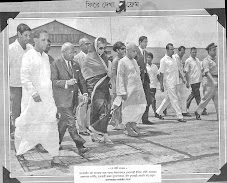



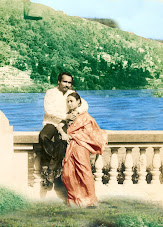






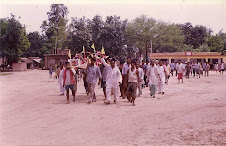

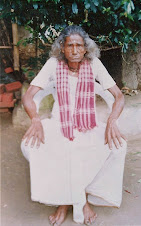
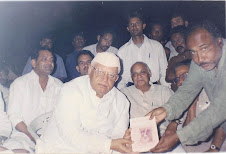
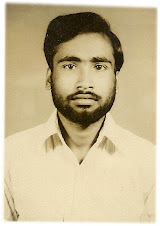



No comments:
Post a Comment